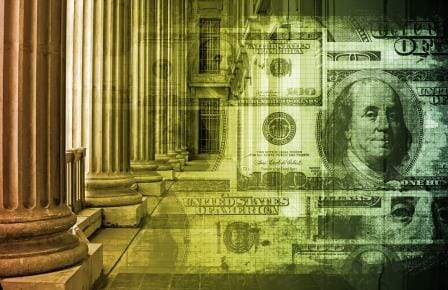The digital dollar raises privacy concerns, as it potentially facilitates government overreach. Cybersecurity threats, including hacks and the costs of protecting digital currency, present additional risks. The adoption of a digital dollar could worsen financial inequality, widen the digital divide and hurt small businesses.
A CBDC is a publicly accessible digital representation of a country’s central bank currency. Unlike digital money used in bank accounts and digital wallets, which are liabilities of commercial banks, a CBDC is a liability of the central bank.
While there are currently physical currencies and digital balances held by commercial banks at the central bank, the Federal Reserve (Fed) is considering a CBDC to “improve the security and efficiency of the United States domestic payment system.” This is due to the emergence of new financial products and services from the private sector, such as digital wallets, mobile payment applications, cryptocurrencies and stablecoins.
Controversy around CBDCs
As central banks around the world explore the concept of central bank digital currencies (CBDCs), the possible introduction of a digital dollar in the United States has sparked lively debate.
A CBDC could provide a platform for innovative financial products and services, faster and cheaper payments, and greater financial inclusion for consumers.
However, a US CBDC also presents risks and policy concerns. These include its impact on the market structure of the financial sector, the availability and cost of credit, the security and stability of the financial system, and the effectiveness of monetary policy.
Dangers of a Digital Dollar: The Risks of CBDCs
One of the most significant dangers of the digital dollar is the potential loss of user privacy. With the ability to track digital transactions, governments may be tempted to use this information to monitor citizens, which can lead to potential abuses of power.
In addition to privacy concerns, the digital dollar could erode financial freedom. With the potential for increased government control over financial transactions, people may find their ability to freely transact limited.
The digital dollar could make it easier for the government to freeze or seize assets. Freezing physical assets in cash requires a court order, but a digital dollar could streamline this process. Thus, it raises concerns about due process and individual property rights.
The digital nature of the digital dollar makes it more susceptible to cyberattacks. This could have serious economic consequences, as trust is a fundamental component of a functioning financial system.
On the other hand, the implementation of a digital dollar may worsen financial inequality by widening the digital divide. Not everyone can access the technology required to use digital currencies, such as smartphones or reliable internet connections. This could disproportionately affect low-income and rural communities, leading to further financial exclusion.
The digital dollar would also foster a reliance on technology for access to financial services, which, in the case of failure or natural disasters, could leave vulnerable populations without access to their funds, increasing existing financial inequalities.
Is the Digital US Dollar the Future of Money?
The future of the digital dollar depends on thorough analysis and consultation with key stakeholders to ensure that the benefits outweigh the risks. As technology advances and demand for digital financial services grows, the idea of a digital dollar could gain more traction. However, the path to mainstream adoption remains uncertain and policymakers need to consider the potential consequences of implementing a digital dollar.
By Audy Castaneda











